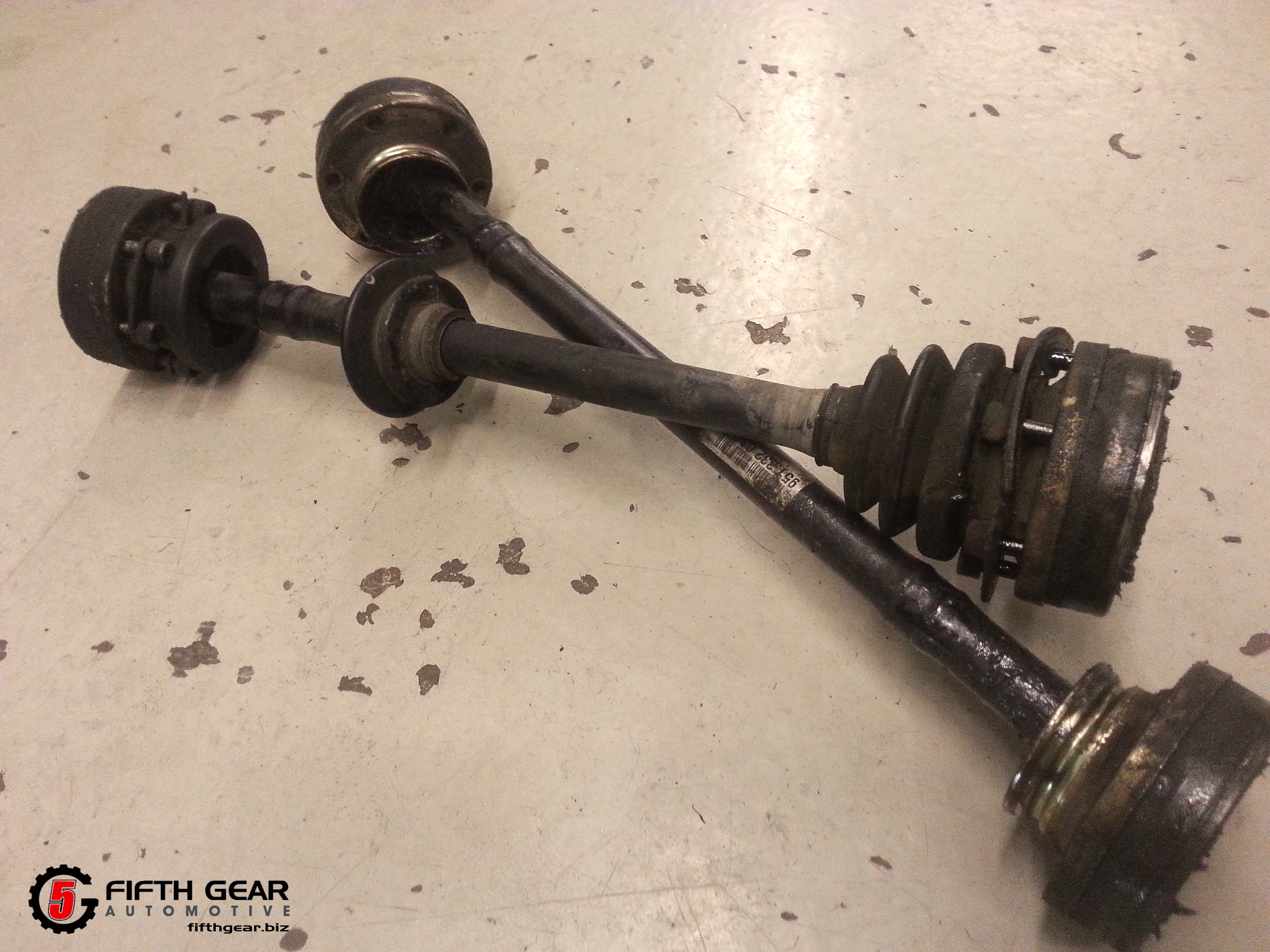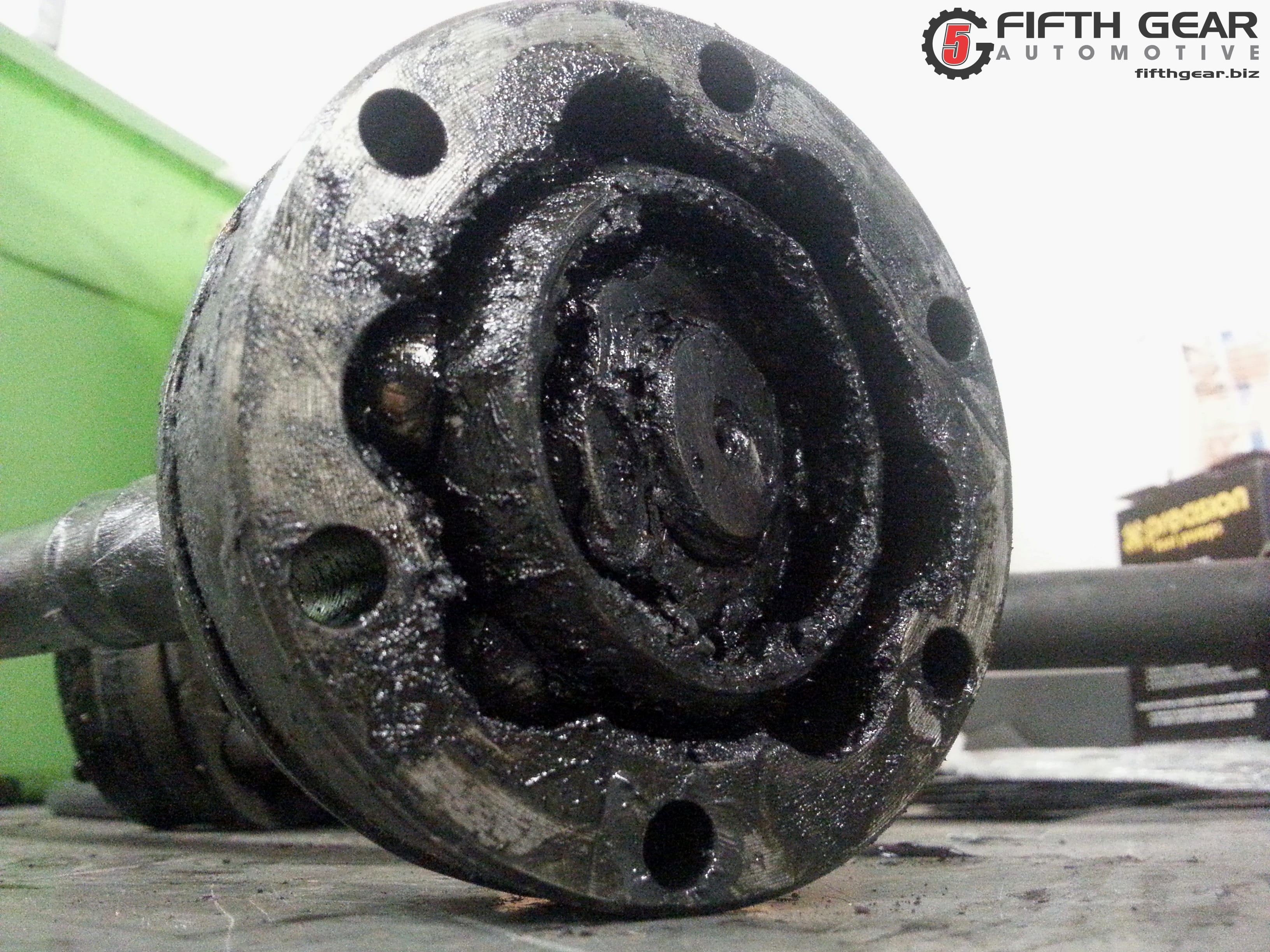Not long ago we shared a post about the importance of regularly inspecting and, if necessary, replacing your vehicle’s CV boots. (In case you missed it, you can read it here.) You could almost consider this post to be a follow-up to that one, or even “Part 2: What happens when I don’t replace damaged CV boots?” Here we’ll take a look at some damaged CV joints on the rear axles of this ’87 Porsche 944 Turbo (951) to get a better idea of what CV axles do and just how important it is to replace those boots as soon as any damage or tearing is discovered.
First things first, a quick recap of what a CV joint is and what it does… CV joint stands for “constant velocity joint” and they can be found on each end of the drive axles in all front wheel drive cars (FWD) and in many rear wheel drive applications as well (such as the example 944 Turbo in this post). Their function is to transfer the torque from the transmission to the drive wheels at a constant speed (hence the name) while accommodating for the variations in relative wheel position due to the up and down motion from suspension travel as well as the camber, caster, and toe set-up of the alignment geometry.


The joint itself is packed with grease specifically formulated for this application to keep the joint lubricated. This grease is critical for the operation of the joint; without it, the heat and friction generated by the unlubricated metal-to-metal contact would quickly damage the joint and cause it to fail. To keep that all-important grease contained where it should be, each joint is enshrouded by a protective rubber boot, or “CV boot.” As long as that boot remains intact, it is not uncommon for CV joints to last well over 100,000 miles or more. If the boot becomes ripped or torn, the grease contained within will get slung out from the joint while road grit, debris, and water will be allowed in which further accelerates the wear and tear on the joint. This is why it is so critical to have your CV boots inspected regularly, and to replace them whenever they are torn or damaged. Replacement boots are significantly less expensive than CV joints or half-shaft assemblies.



Top: Torn CV boot
Bottom Left: View of CV joint exposed by torn boot. Bottom Right: Badly worn and dirty CV joint caused by exposure from torn boot.
What happens if torn CV boots aren’t replaced? Well, it won’t take long for enough of the CV grease to be replaced with harmful grit and debris that damage to the joint is unavoidable. That’s exactly what happened to the 944 in the pictures below. Look at all the gouging and pitting in the stub axle, and how gritty and dirty the grease in the joints became. In this instance, the damage to the joints was exacerbated by a broken transmission mount as well as the torn boots.
Pictured: Scoring and gouging of the stub axle caused by damaged CV Joints.
If your CV joints reach this state, there will be some definite signs and symptoms that they need to be replaced including an audible clicking or popping noise while turning, excessive vibration from the axle while driving, or a clunking/clattering from the joint while driving (which can be intermittent).
To avoid more expensive repairs to the CV joint or axles, we recommend inspecting the CV boots at every routine maintenance interval and replacing them at the first signs of damage or wear.If you suspect that your CV joints might be damaged, or if you’re unsure of when the boots were last inspected, give us a call today to have one of our certified auto repair technicians take a look.
#Porsche #Car #Repair








